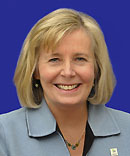Governor recognizes Council's outstanding energy efficiency work
December 2012
Energy-saving initiatives saved region’s ratepayers, taxpayers $7.9 million in 2012
Council employees do excellent work every day but don’t often get the kind of public credit they deserve. This time it’s different.

In December, Gov. Dayton called out several Council employees and managers for special recognition at his “Continuous Improvement Awards” ceremony for their work improving government services to the people of Minnesota.
One Council team was among the five teams singled out among 43 nominations for extraordinary achievement in government and for saving taxpayers millions of dollars.
In fact, Council staff were recognized for work on two of the five teams honored – a great accomplishment!
For starters, the governor recognized 13 employees on the Council’s “Energy Savings Initiative” team for their work reducing energy use and preparing for more energy savings in coming years. In 2012 alone, work by Metro Transit and Environmental Services staff will save the region’s taxpayers and ratepayers an estimated $7.9 million in energy costs – and even more savings are estimated every year in the future.
Through process improvements at its treatment plants, ES staff is conserving resources, reducing air pollution and promoting independence. Metro Transit’s “Go-Greener” initiative is saving energy by specifying energy-efficient materials when buying buses, adding more hybrid-electric buses, and modifying operations to reduce idling.
From January to October 2012, Metro Transit conserved 600,000 gallons of fuel, saving $2.1 million compared to 2007 operations. By making its facilities more energy-efficient, Metro Transit saved another $2 million this year compared to 2008.
There’s more. One of the Council’s water supply planners represented us on the MPCA-led “Interagency Clean Water Fund Performance Team,” which the governor recognized for its work tracking Clean Water Legacy Funds.
Their work and a new evaluation framework will help ensure that the state gets the best investment for every dollar budgeted in the Clean Water Legacy Fund. The estimated savings from the effort is an impressive $8-$10 million annually.
The Council will build on these successes in 2013. We are committed to continuously seek opportunities for innovation and invest strategically to make those improvements happen.
Susan Haigh
December 2012